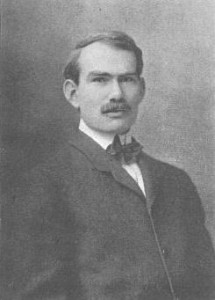Lee de Forest was one of the most important inventors in modern times, but don’t feel bad if you haven’t heard of him. The man is as forgotten as his invention, the Audion, is ubiquitous. The vexing inventor’s 1906 discovery made audio amplification possible, giving new life to the flagging radio industry and making possible any number of media. Gizmodo has posted an excerpt from Nicholas Carr’s new book, The Shallows, which provides insight into de Forest. An excerpt:
“Even when judged by the high standards set by America’s mad-genius inventors, de Forest was an oddball. Nasty, ill-favored, and generally despised–in high school he was voted ‘homeliest boy’ in his class–he was propelled by an enormous ego and an equally outsized inferiority complex. When he wasn’t marrying or divorcing a wife, alienating a colleague, or leading a business to ruin, he was usually in court defending himself against charges of fraud or patent infringement–or pressing his own suit against one of his many enemies.
De Forest grew up in Alabama, the son of a schoolmaster. After earning a doctorate in engineering from Yale in 1896, he spent a decade fiddling with the latest radio and telegraph technology, desperately seeking the breakthrough that would make his name and fortune. In 1906, his moment arrived. Without quite knowing what he was doing, he took a standard two-pole vacuum tube, which sent an electric current from one wire (the filament) to a second (the plate), and he added a third wire to it, turning the diode into a triode. He found that when he sent a small electric charge into the third wire–the grid–it boosted the strength of the current running between the filament and the plate. The device, he explained in a patent application, could be adapted ‘for amplifying feeble electric currents.’
De Forest’s seemingly modest invention turned out to be a world changer. Because it could be used to amplify an electrical signal, it could also be used to amplify audio transmissions sent and received as radio waves. Up to then, radios had been of limited use because their signals faded so quickly. With the Audion to boost the signals, long-distance wireless transmissions became possible, setting the stage for radio broadcasting. The Audion became, as well, a critical component of the new telephone system, enabling people on opposite sides of the country, or the world, to hear each other talk.
De Forest couldn’t have known it at the time, but he had inaugurated the age of electronics.”
Tags: Lee de Forest, Nicholas Carr

